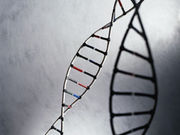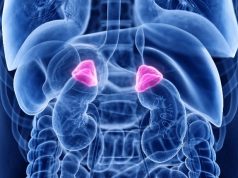Estimated 33 percent of overall risk is genetic; certain types of cancer have additional risk
TUESDAY, Jan. 5, 2016 (HealthDay News) — Having an identical twin diagnosed with cancer increases the other twin’s risk of developing not just that type but any form of cancer, according to research published in the Jan. 5 issue of the Journal of the American Medical Association.
The study involved 203,691 twins, both identical and fraternal, from Denmark, Finland, Norway, and Sweden. About one-third of the participants developed cancer during the study, and overall, twins were not more likely to develop cancer than the general population. But when one identical twin developed any cancer, the other twin carried a 14 percent increased cancer risk compared with the general population, the researchers found. By comparison, a fraternal twin’s cancer risk increased only 5 percent if their sibling was diagnosed with cancer.
Overall, the researchers estimated that about 33 percent of cancer risk is inherited from genes. Some specific cancers carried additional genetic risk, however. For testicular cancer, researchers found that a man’s risk of developing this disease was 12 times higher if his fraternal twin developed it, and 28 times higher if his identical twin developed it. The investigators also found a very strong role of genetics in melanoma (58 percent), prostate cancer (57 percent), and nonmelanoma skin cancer (43 percent). In other cancers, genetics appeared to play a mild to moderate role: ovarian (39 percent), kidney (38 percent), breast (31 percent), and uterine (27 percent). Genetics appeared to play a very small role in lung cancer (18 percent), colon cancer (15 percent), rectal cancer (14 percent), and head and neck cancer (9 percent).
“This information about hereditary risks of cancers may be helpful in patient education and cancer risk counseling,” the authors conclude.
Abstract
Full Text (subscription or payment may be required)
Copyright © 2016 HealthDay. All rights reserved.








